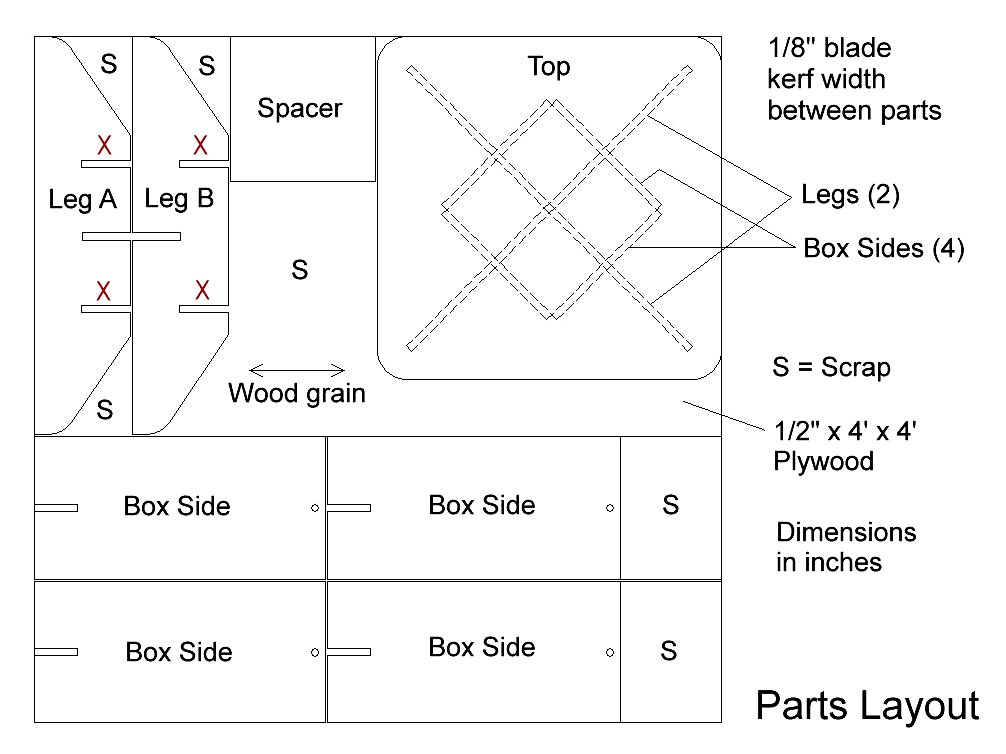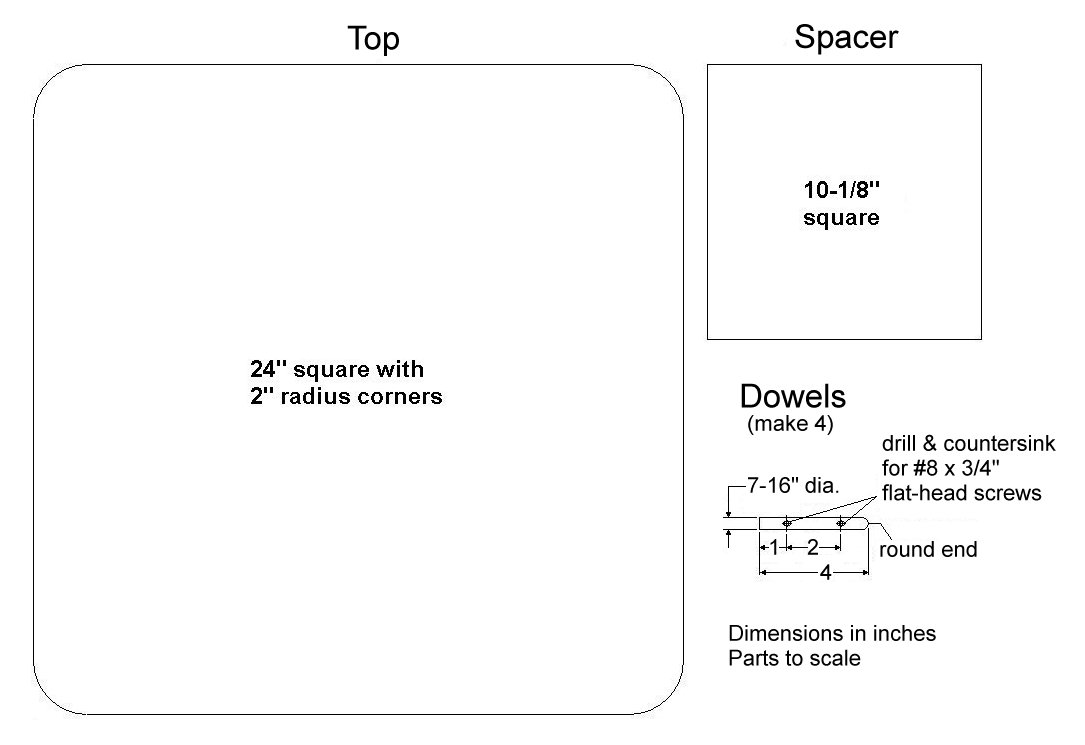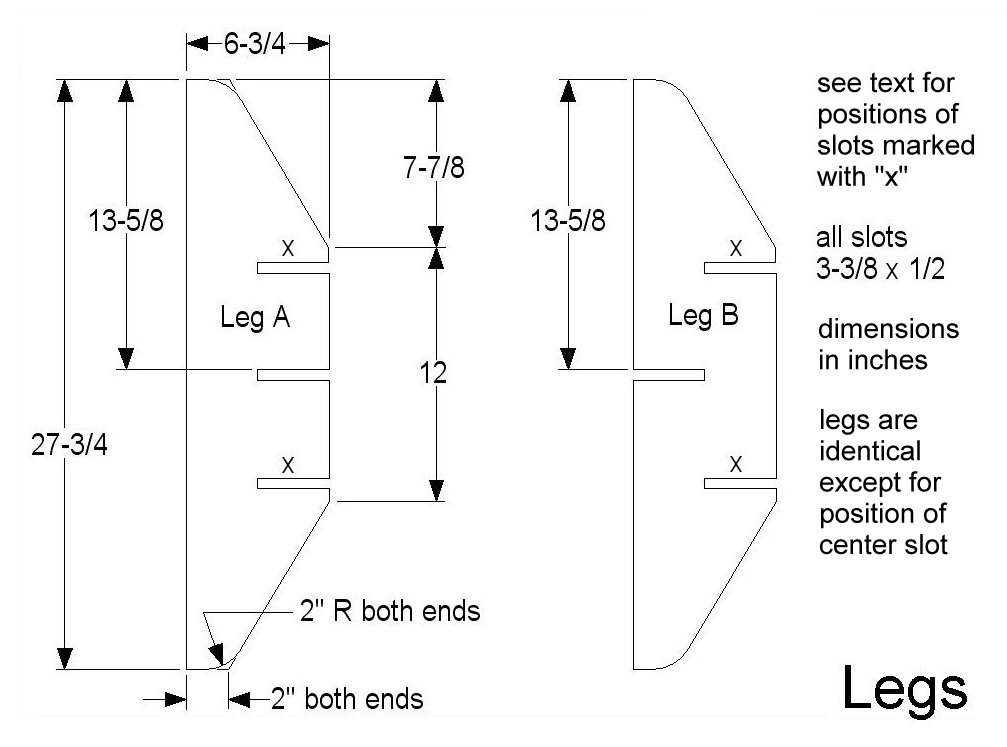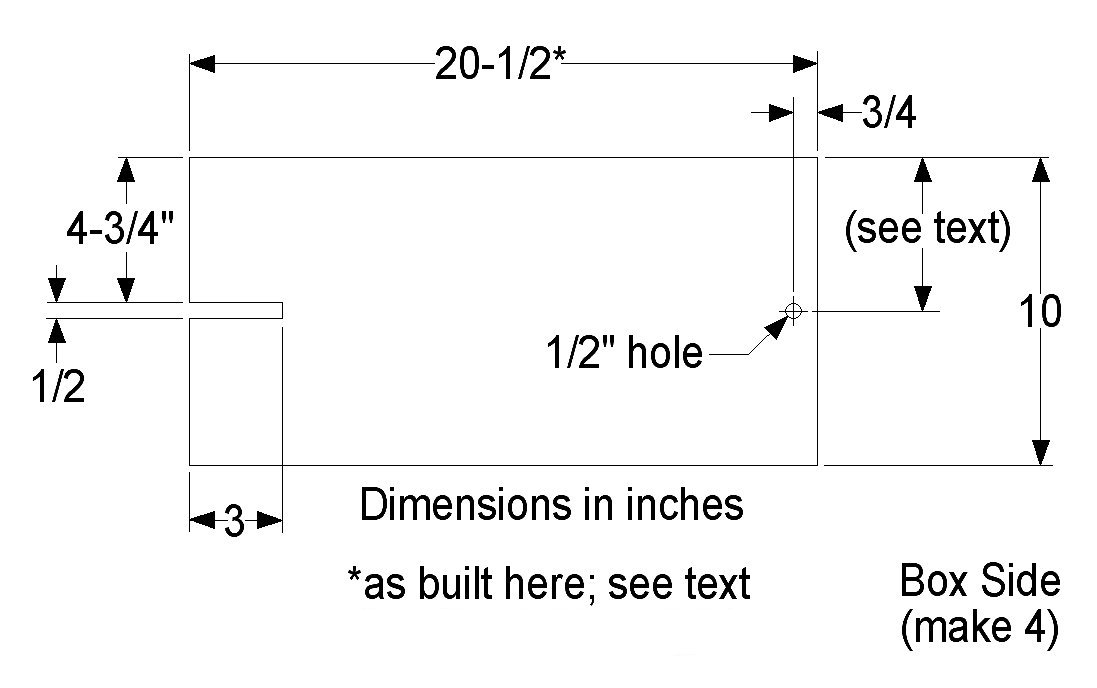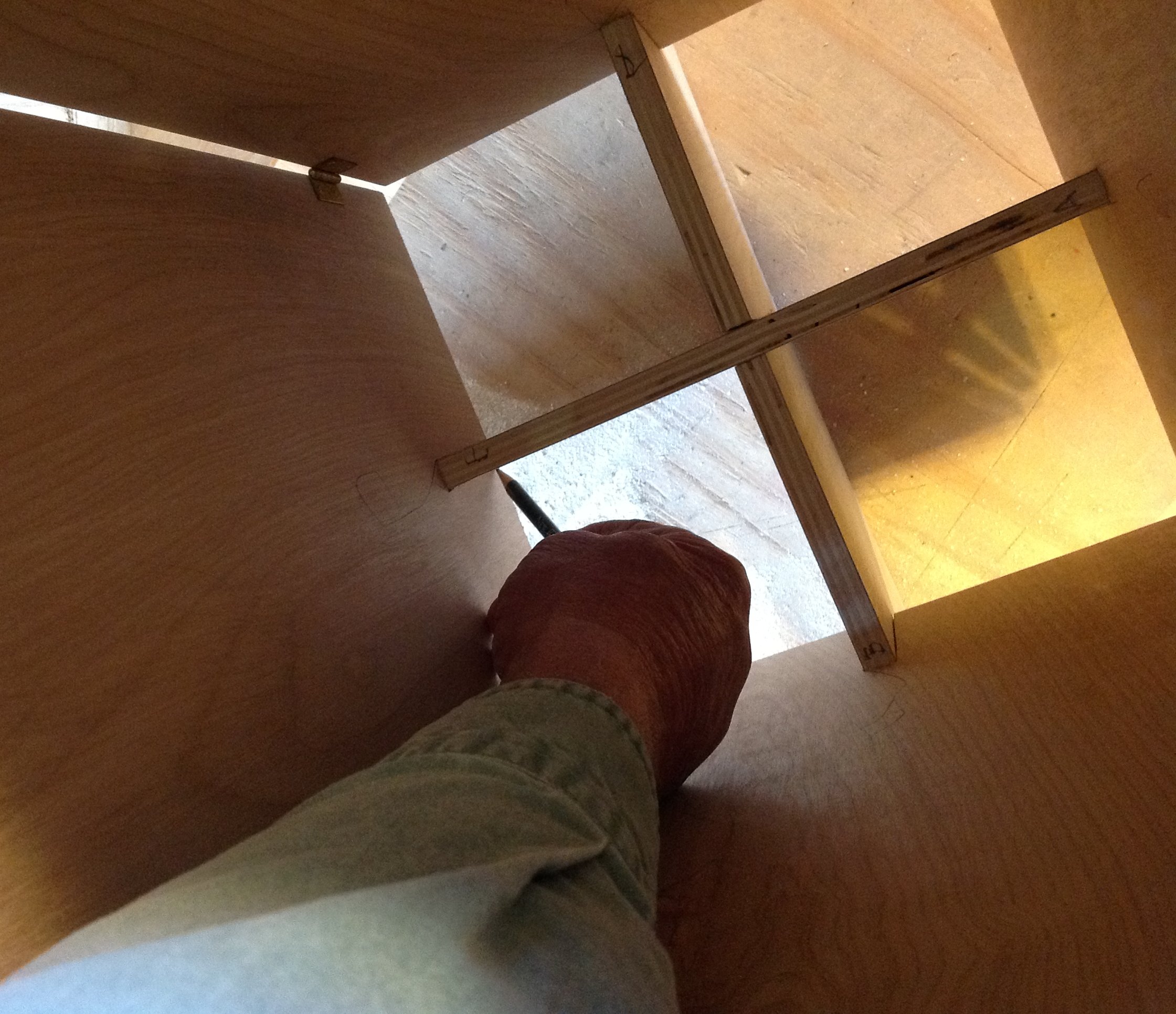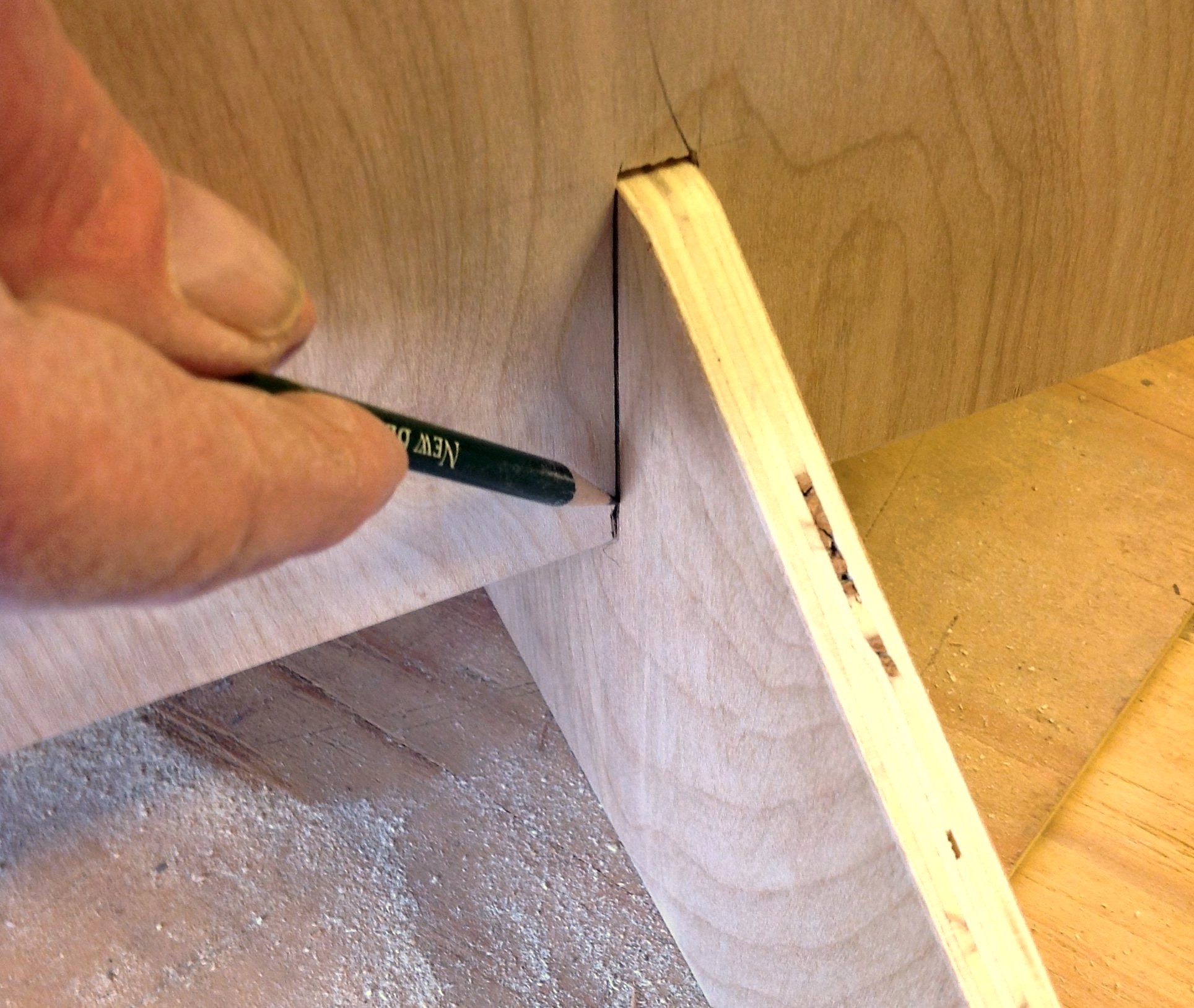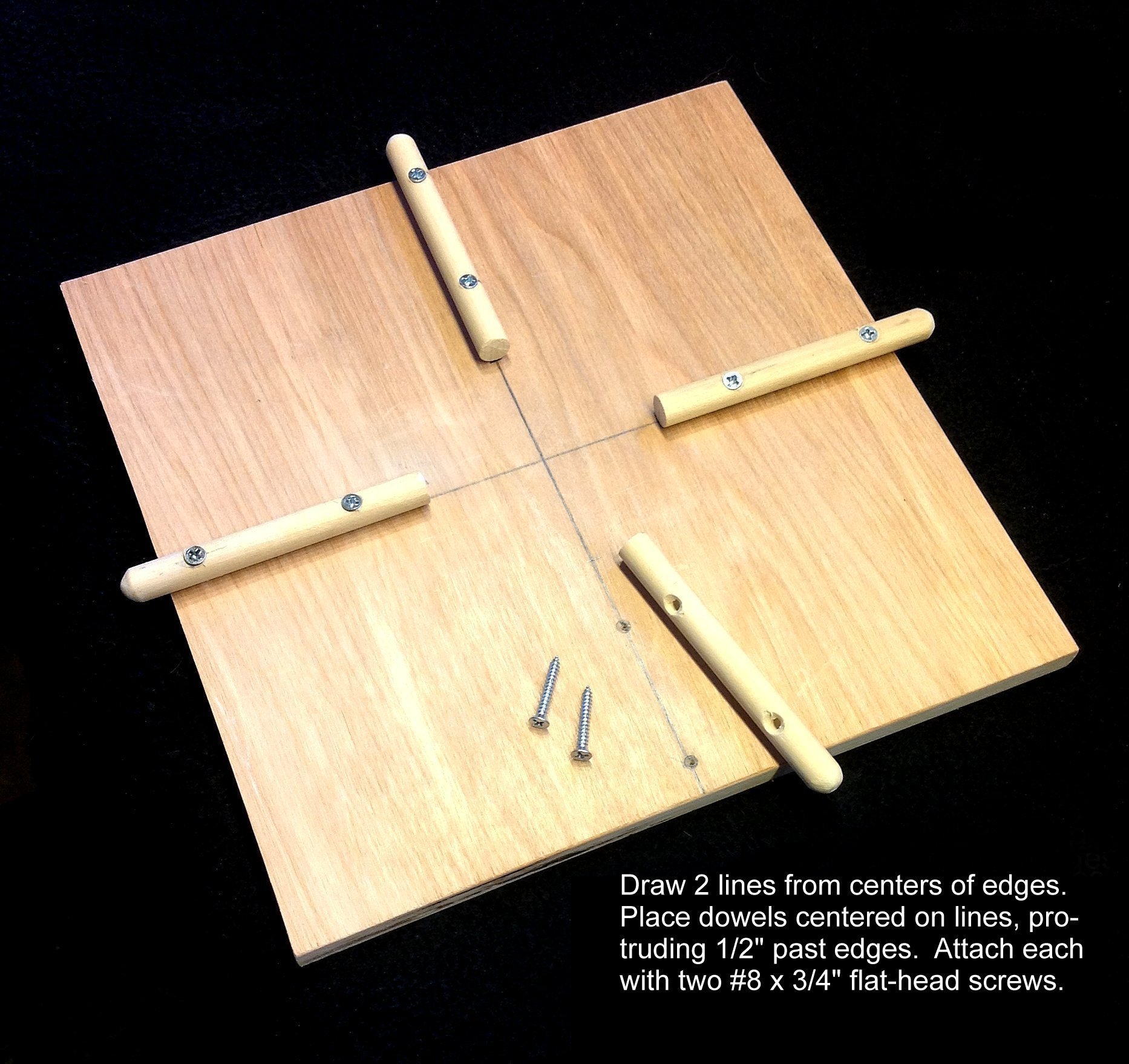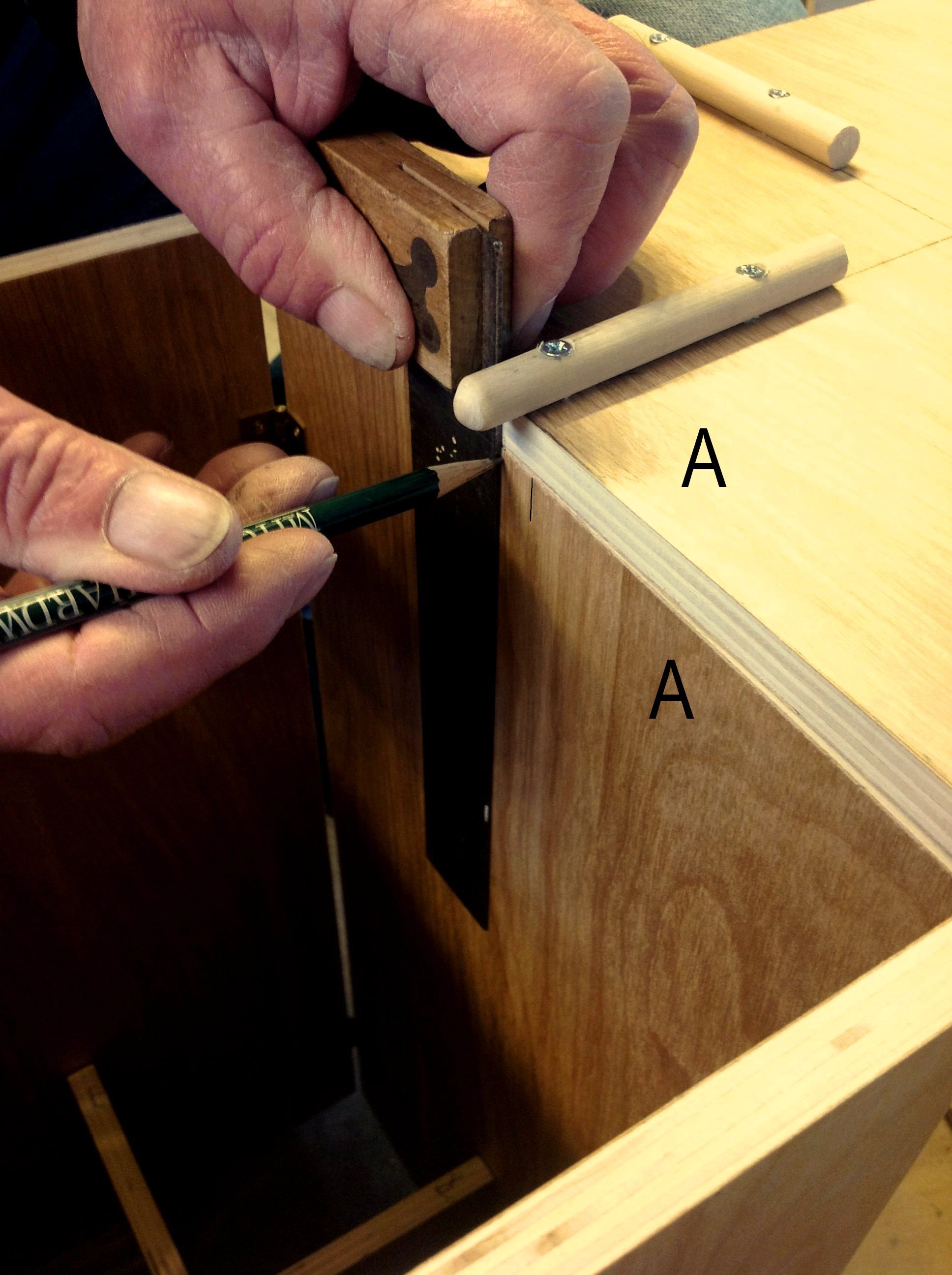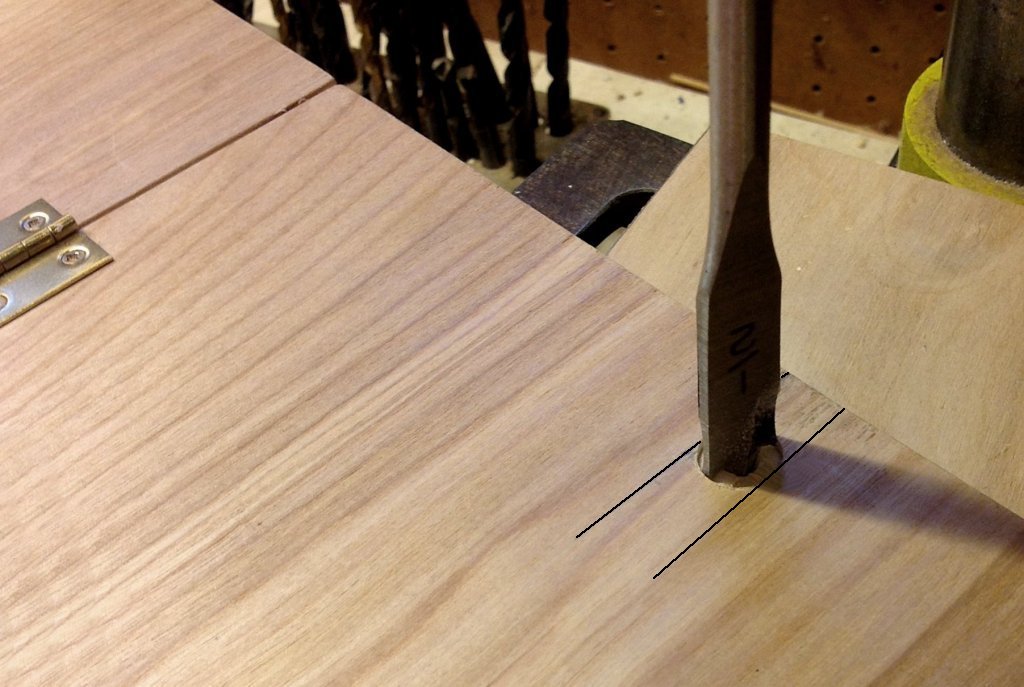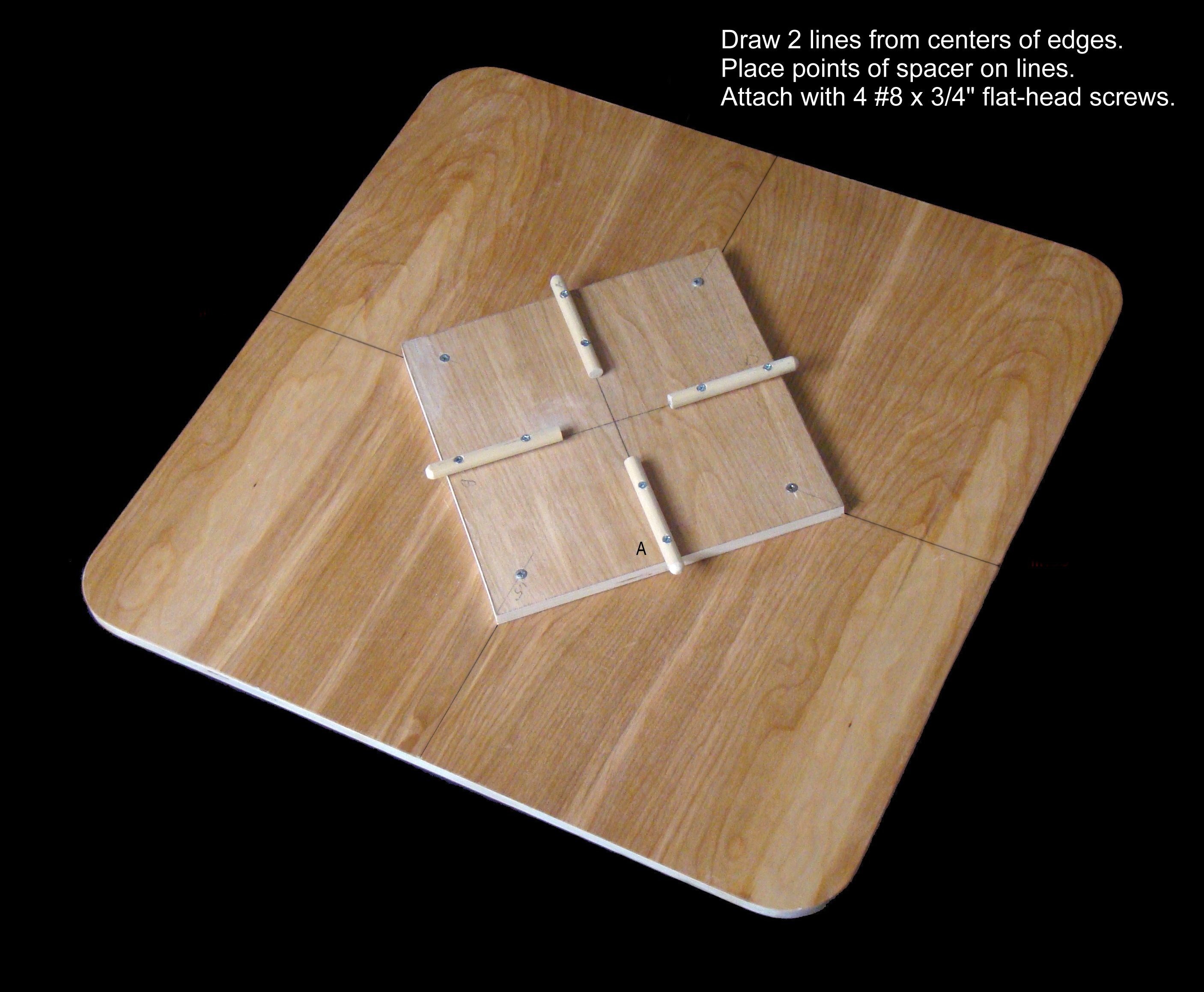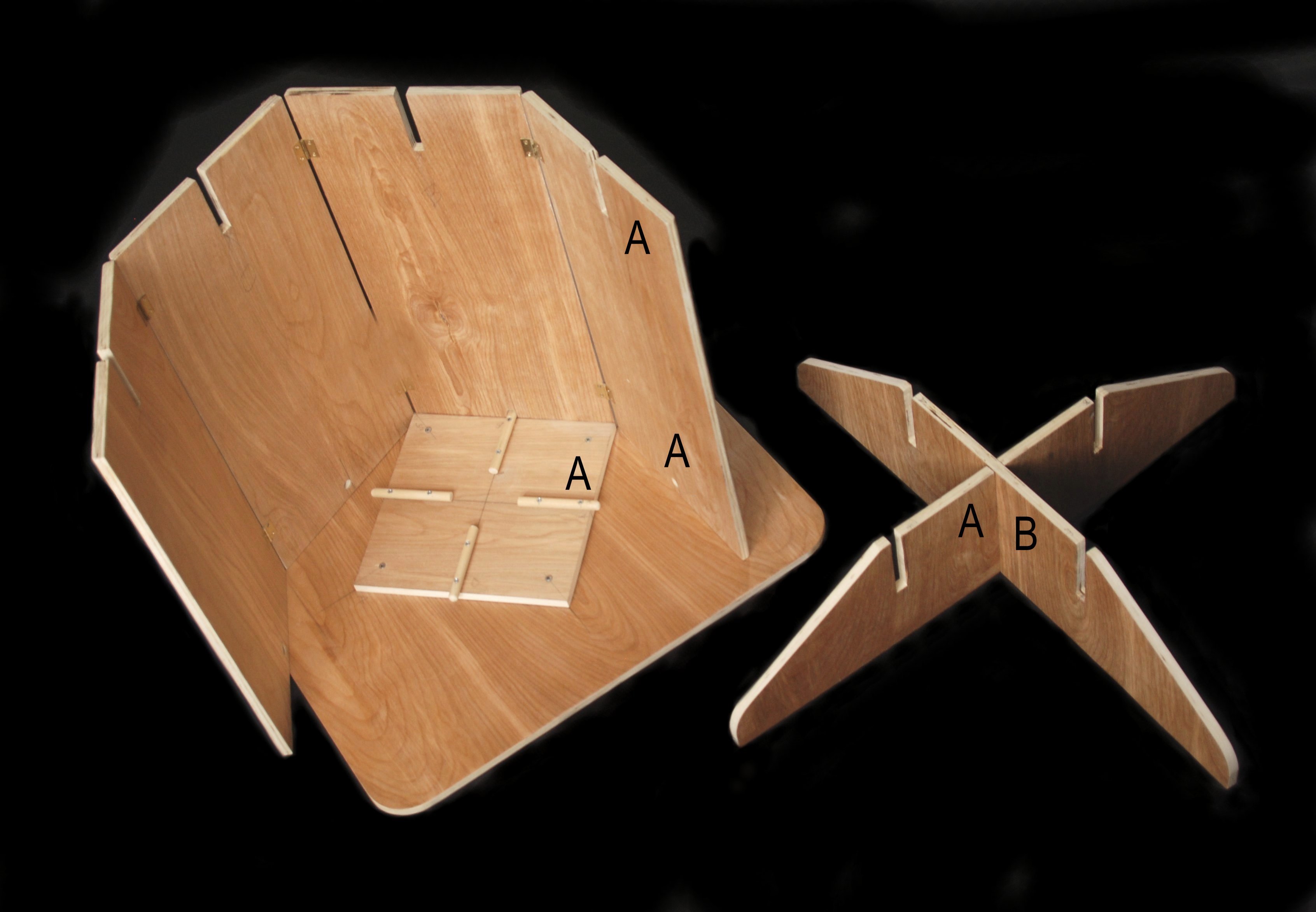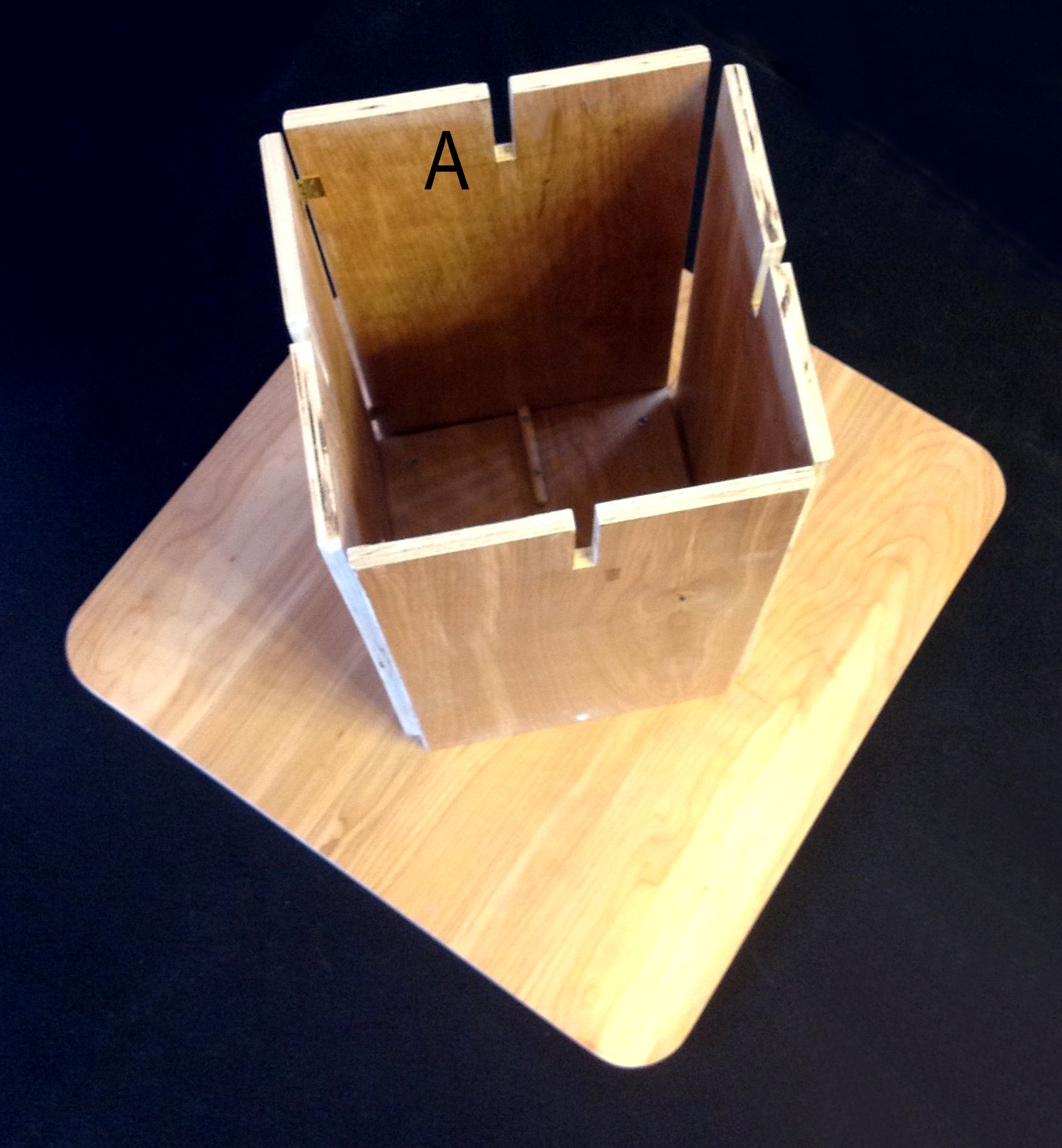This sturdy table assembles in seconds without tools, and stores flat in a closet or under a bed. You can make it over a weekend from a ½”×4’×4′ sheet of finish-grade plywood.
The table shown is intended for children ages 5–7. For bigger kids or adults, change the box panel lengths accordingly. (Suggested table heights for various ages can be found online.) Reducing the box-panel slot depths by up to 1″ will also increase table height.
A table saw, band saw, and disc sander will speed the work, but a circular saw and jigsaw will do. The layout shown allows for saw kerfs.





